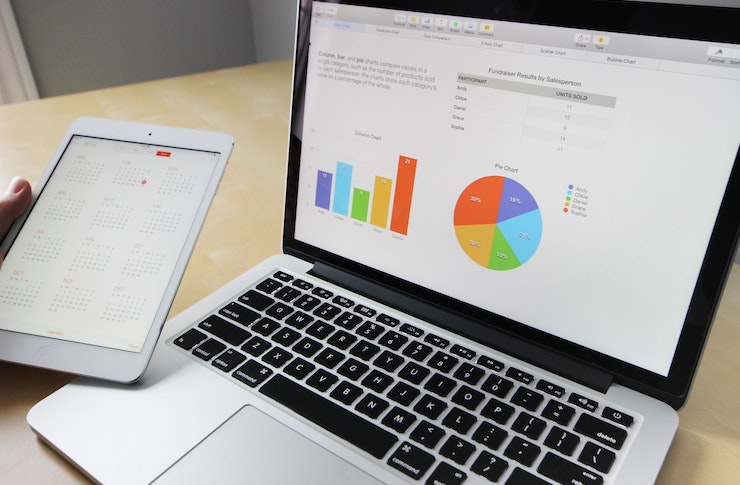Streamline Your Business with Modern Payroll Software Solutions
Managing employee payroll can be one of the most time-consuming and error-prone tasks for businesses of all sizes. Modern payroll software has revolutionized how companies handle compensation, taxes, and compliance, transforming what was once a manual, paperwork-heavy process into a streamlined digital operation. With the right payroll solution, businesses can reduce administrative burden, improve accuracy, and ensure compliance with ever-changing tax regulations while freeing up valuable time to focus on core business activities.

What Key Features Make Payroll Management More Efficient?
Modern payroll software offers several essential features that significantly enhance efficiency and accuracy. Automated tax calculations eliminate the guesswork and reduce human error by automatically computing federal, state, and local taxes based on current rates. Direct deposit functionality streamlines payment distribution, allowing employees to receive their wages instantly while reducing the administrative overhead of printing and distributing physical checks.
Real-time reporting capabilities provide managers with instant access to payroll data, enabling better financial planning and decision-making. Employee self-service portals empower staff to access their pay stubs, tax documents, and update personal information independently, reducing HR inquiries. Additionally, multi-state tax handling ensures compliance across different jurisdictions, particularly valuable for businesses with remote workers or multiple office locations.
How Do Automated Payroll Solutions Reduce Administrative Work?
Automated payroll solutions dramatically minimize manual tasks that traditionally consumed hours of administrative time. Time tracking integration automatically imports employee hours from timekeeping systems, eliminating the need for manual data entry and reducing transcription errors. Scheduled payroll runs can be set up to process automatically on predetermined dates, ensuring consistent payment timing without requiring manual intervention.
Benefits administration becomes seamless when payroll software automatically calculates and deducts health insurance premiums, retirement contributions, and other benefits. Tax filing automation prepares and submits required forms to government agencies, reducing the risk of missed deadlines and penalties. These automated processes not only save time but also improve accuracy by removing human error from repetitive calculations and data transfers.
What Are the Advantages of Integrating Payroll with HR Systems?
Integration between payroll processing and existing HR systems creates a unified ecosystem that enhances data accuracy and operational efficiency. When employee information is synchronized across platforms, changes made in the HR system automatically update payroll records, ensuring consistency and reducing duplicate data entry. This integration provides a comprehensive view of employee costs, including salary, benefits, and taxes, enabling better workforce budgeting and financial planning.
Seamless integration also improves compliance management by maintaining consistent employee records across all systems. Performance management data can inform compensation decisions, while organizational changes like promotions or department transfers automatically trigger appropriate payroll adjustments. This connectivity streamlines onboarding processes, allowing new employees to be quickly added to both HR and payroll systems simultaneously.
What Common Challenges Do Smarter Payroll Solutions Address?
Traditional payroll management faces numerous challenges that modern solutions effectively address. Compliance complexity represents a major hurdle, as tax laws and labor regulations frequently change across different jurisdictions. Smart payroll software automatically updates tax tables and regulatory requirements, ensuring ongoing compliance without manual intervention.
Data security concerns are addressed through robust encryption, secure cloud storage, and regular automated backups that protect sensitive employee information. Scalability issues that plague growing businesses are resolved through flexible software architectures that accommodate increasing employee counts and expanding geographic presence. Error reduction is achieved through automated calculations, validation checks, and audit trails that track all changes and transactions.
Tips for Selecting a Payroll System That Fits Your Business
Choosing the right payroll system requires careful consideration of your specific business needs and growth plans. Start by evaluating your company size and complexity, including the number of employees, pay frequencies, and geographic locations. Consider integration requirements with existing software systems like accounting, HR, or time tracking platforms to ensure seamless data flow.
Assess the level of support and training provided by vendors, particularly if your team lacks extensive payroll experience. Look for systems that offer scalability to accommodate future growth without requiring costly migrations. Evaluate reporting capabilities to ensure the software can generate the specific reports your business requires for financial planning and compliance. Finally, consider the total cost of ownership, including implementation, training, ongoing support, and per-employee fees.
| Provider | Starting Price | Key Features | Best For |
|---|---|---|---|
| Gusto | $40/month + $6/employee | Full-service HR, benefits, automated tax filing | Small to medium businesses |
| ADP Run | $59/month + $4/employee | Comprehensive reporting, mobile app, compliance | Growing businesses |
| Paychex Flex | $60/month + variable per employee | Scalable solutions, retirement services | Multi-location companies |
| QuickBooks Payroll | $45/month + $4/employee | Accounting integration, same-day direct deposit | QuickBooks users |
Prices, rates, or cost estimates mentioned in this article are based on the latest available information but may change over time. Independent research is advised before making financial decisions.
Modern payroll software represents a crucial investment for businesses seeking to improve operational efficiency and reduce administrative burden. By automating complex calculations, ensuring compliance, and integrating with existing systems, these solutions transform payroll from a time-consuming liability into a streamlined asset. The key to success lies in selecting a system that aligns with your current needs while providing the flexibility to support future growth and changing business requirements.




